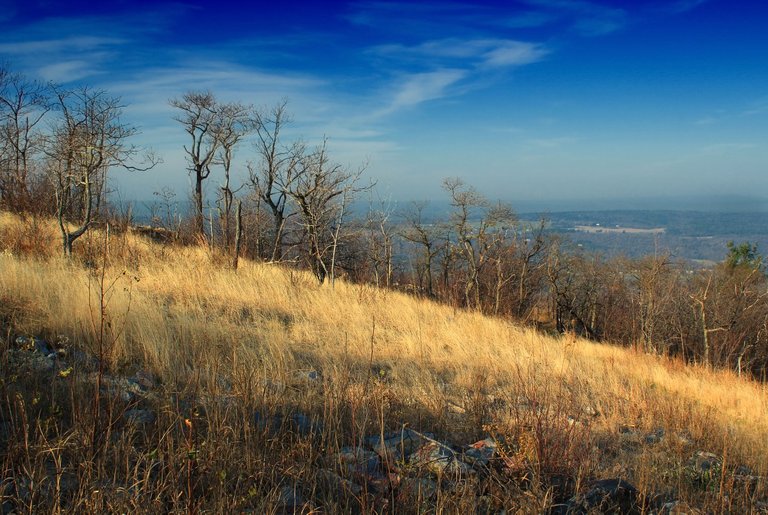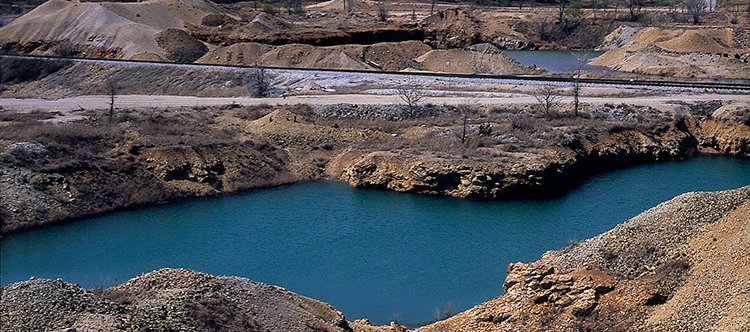
from PxHere
In this publication, I will be talking about the mineral; zink, as well as the consequences of consuming an excessive amount of it. Zinc is a critical component that may be gained through a range of dietary supplements and food sources. Overdosing on zinc, on the other hand, might have a bad influence on your health.WHAT DOES THE NAME ZINC MEAN IN GENERAL?
Zinc, one of the most prevalent elements, dominates the Earth's crust. Zinc may be found in the atmosphere, soil, and water.
Water is present in all foods. In its purest form Zinc is an elemental metal that is bluish-white. stainless steel shining Zinc powder is extremely combustible and has the potential to trigger an explosion. Storage in damp regions may result in a fire. Metallic
Zinc is utilized in a wide range of industries. A typical use of Zinc coatings may benefit steel and iron, as well as other metals. Zinc is also included in the combination to make alloys such as brass and copper bronze.
The combination of zinc with other elements such as chlorine, oxygen, and sulfur can also result in the formation of zinc compounds. Hazardous waste sites are likely to include a wide variety of zinc compounds, including zinc chloride (ZnCl2), zinc oxide (ZnO), zinc sulfate, and zinc sulfide. Zinc sulfide is the most frequent form of zinc ore that occurs naturally in the environment. A wide variety of zinc compounds are regularly used in the industrial industry. White paint, ceramic tiles, and other products containing zinc sulfide and zinc oxide are often used in the production process.
Zinc oxide can also be used in the production of rubber. Zinc compounds, such as zinc chloride and zinc sulfate, are used in a variety of applications, including wood preservation and textile manufacturing. Smoke from smoke bombs contains a substantial quantity of zinc chloride as well as other toxins and contaminants. Zinc compounds are found in a variety of products, including vitamin supplements, sunscreen, diaper rash ointments, deodorants, athlete's foot preparations, acne and poison ivy preparations, and antidandruff shampoos, among others.
I'm curious about what happens to zinc after it enters the environment.
Natural and human-made activities both contribute to the influx of zinc into the atmosphere, water, and soil, which is measured in parts per billion. Approximately one-third of the zinc that enters the environment is emitted through mining, purification, steel production, and coal combustion, as well as the combustion of byproducts from these operations.
As a result of these processes, zinc levels in the atmosphere may rise. It is possible for zinc to be released into rivers through waste streams from zinc and other metal manufacturing and zinc chemical enterprises, household wastewater, and runoff from zinc-containing soil.
The principal sources of zinc in soil are zinc wastes from the metal manufacturing and power generation industries, as well as coal ash from power plants.
Zinc levels in the soil are also increased as a result of the application of sludge and fertilizer. It is most frequently encountered as fine dust particles, which are a source of zinc contamination in the environment. Eventually, this fine powder will blanket the land and sea on the planet. Rain and snow have the potential to remove zinc from the environment. Insignificant concentrations, Zn may be found near the bottoms of bodies of water such as lakes and rivers. Small quantities of the substance may stay in solution or as finely scattered particles in the water.
When the acidity of a water source increases, the amount of zinc in the water may increase as well. Fish can absorb zinc from both the water in which they swim and the food that they consume.
A large number of zinc ions in soil are bound to the soil and do not readily dissolve when exposed to water. Groundwater contamination from hazardous waste sites has occurred; however, the extent of the contamination varies depending on the soil type. Consumption of zinc-containing soil or water by an animal may result in the animal absorbing the zinc from the soil or water. Because zinc is a trace mineral, the health of all animals must have trace amounts of zinc in their bodies.
Is ZINC HARMFUL TO MY HEALTH?
For your body to function well, you must consume zinc in little amounts. There are zinc compounds in our food. The average daily zinc intake in the United States ranges from 5.2 to 16.2 milligrams (one milligram is equal to 0.001 gram). Nutritional zinc levels range from around 2 parts zinc per million parts (ppm) of food (for example, green leafy vegetables) to 29 ppm (meats, fish, poultry). Almost all drinking water contains zinc. Water and other liquids stored in metal containers or transported through zinc-coated pipes may contain substantial amounts of zinc, which might pose a health risk. Zinc exposure may increase if you use zinc supplements over the recommended daily dosage.
Airborne zinc concentrations are generally modest and steady. Zinc levels in the air in the United States range from 0.1 to 1.7 micrograms per cubic meter (g/m3) in metropolitan regions.
In industrial areas, zinc concentrations in the air may be higher. On an annual basis, 5 g/m3 of zinc were found in one area near an industrial supply of zinc.
Around 150,000 persons are exposed to zinc in the workplace, which may significantly raise their overall zinc exposure above the average background level. In the production of zinc-containing alloys, galvanized metals, and machine components, as well as the production of paint, oilcloths, batteries, some types of glass and ceramics, and dyes, workers are exposed to zinc in their work. Mechanics, painters, and construction workers all breathe in zinc dust.
What is the mechanism through which zinc enters and exits my body?
Digestive tract: Zinc can be absorbed by food or liquids containing it.
The lungs can also get infested with zinc if you work in a zinc-smelting or zinc welding facility and inhale zinc dust or fumes. Only a little quantity of zinc is absorbed via the skin. Zinc-rich drinking water is the most common method of exposure near NPL waste sites. There is a lot of zinc in the human body. Exposed individuals' blood and bone concentrations of zinc go up most quickly afterward. Zinc may remain in the bone for a long period once it is absorbed. Zinc is typically excreted in the urine and feces.
What are the possible health benefits of zinc?
A large number of studies are done by scientists to protect the public from dangerous substances and to provide treatment options for those who have been affected.
If a substance is poisonous, the body's capacity to absorb, use, and expel it can be utilized to assess this. Some medications may necessitate animal testing. Cancer and birth defects, for example, can be discovered through animal experiments. Without the ability to use animals in their studies, scientists would be unable to get the data they need to make sound decisions about public health. Animals used in the scientific study should be treated with respect and care. Scientific research animals are now legally protected, thus scientists must adhere to severe animal care regulations.
Zinc dust and welding fumes can cause metal fume fever, however, the condition is usually reversible if zinc exposure is ceased. Zn exposure may have unknown long-term health implications.
Water, nutrition, and zinc supplements all have a role to play in the development of zinc deficiency in the body.
The recommended daily allowances (RDAs) for zinc for males are 11 mg and 8 mg, respectively. This is although harmful amounts of zinc are far greater than these RDAs. Zinc can cause stomach cramps, nausea, and vomiting if taken in high quantities (10–15 times the RDA) over a short time. The pancreas is harmed by excessive fat ingestion, and HDL cholesterol levels are lowered.
Mice and ferrets were harmed by zinc intakes 1,000 times higher than the daily recommendation for an extended time. Zinc overdoses caused rats to become infertile. Those rats who consumed a lot of zinc when pregnant gave birth to smaller pups. Zinc compounds, such as zinc acetate and zinc chloride, caused skin irritation in rabbits, guinea pigs, and mice when applied to their coats at low concentrations. Humans are susceptible to skin irritation when exposed to certain chemicals.

Abandoned lead and zine mines and chat piles in Galena, Cherokee County, that have since been reclaimed.
source
Since zinc is not considered a human carcinogen, the EPA has decided that it should not be classified as one.
Zinc deficiency, at the very least, is as harmful to one's health as zinc excess.
The symptoms of zinc deficiency include eating less, losing your sense of taste, and developing blisters on the skin. In young males, zinc deficiency can also lead to underdevelopment of the genital organs and a delay in their growth. Birth defects can occur if a pregnant woman does not acquire enough zinc.
A lack of zinc in the diet can lead to anemia.
WHAT MAY BE THE SIDE EFFECTS OF ZINC ON CHILDREN?
Exposures have the potential to have a negative influence on human health from conception to adolescence.
Zinc is essential for the regular growth of young newborns.
"In mothers who did not ingest enough zinc throughout pregnancy, birth abnormalities were more prevalent, and newborns were smaller (in terms of birth weight)." Zinc deficiency in the diet of very early infants resulted in children who were shorter and weighed less than those who got enough zinc. High levels of phytate in foods, such as soy-based formulas, might reduce dietary zinc absorption.
Excessive consumption of these foods may have the same harmful influence on children's health as zinc deficiency.
Adults who have ingested big quantities of zinc may react differently than youngsters who have consumed large amounts. Zinc solution can hurt the mouth, stomach, and pancreas of youngsters who consume large amounts of caustic zinc solution, but similar effects have been observed in adults who consume the same zinc solution.
HOW CAN FAMILIES AVOID ZINC EXPOSURE?
Photo by Robert Collins on Unsplash
Whether you are determined to have been exposed to substantial quantities of zinc, ask your doctor if you or your children have been exposed. Your doctor may need to seek an investigation depending on your state's health agency.
Children who live close to hazardous waste sites are at increased risk of exposure due to inhalation, drinking contaminated drinking water, touching or eating soil that has been contaminated with zinc, among other things. It is doubtful that zinc obtained via dirt consumption will have a detrimental influence on a child's health. Parental monitoring is required, however, to ensure that children do not consume dirt and that they wash their hands before eating frequently. If you have children, consult with your family doctor to determine if and how hand-to-mouth activities should be prohibited in your household.
Zinc is an essential nutrient for the health of both children and adults. Overuse of some medications or zinc-enriched vitamins may be hazardous; thus, these medications should be taken with caution at all times. Zinc poisoning can occur if a sufficient amount of zinc is breathed by accident in large quantities.
Consult with a doctor as soon as possible.
Please accept my sincere thanks for sticking with me until the very end! For further information on this subject, please see the links provided in the body of the article.
•Chemicool.com
- https://www.healthline.com/nutrition/zinc
- https://www.webmd.com/vitamins/ai/ingredientmono-982/zinc
- https://ods.od.nih.gov/factsheets/Zinc-Consumer/
- https://www.everydayhealth.com/diet-nutrition/potential-benefits-of-zinc-supplements/
- https://www.mcknights.com/marketplace/the-importance-of-zinc-especially-for-the-elderly/
- https://www.medicalnewstoday.com/articles/263176
- https://www.mayoclinic.org/drugs-supplements-zinc/art-20366112
- https://www.nhs.uk/conditions/vitamins-and-minerals/others/
- https://www.healthline.com/health/erectile-dysfunction/zinc#:~:text=Zinc%20supplements%20can%20help%2C%20but,nausea
- https://www.healthline.com/nutrition/zinc-overdose-symptoms
- https://www.environmentalpollutioncenters.org/zinc/amp/
- https://www.greenspec.co.uk/building-design/zinc-production-environmental-impact/
- http://www.idph.state.il.us/envhealth/factsheets/zinc.htm

It appears that zinc and magnesium improves the immune system. The minerals have been in the news as some believe that immune boosting supplements can reduce the severity of Covid.
Zinc has made headlines in other areas.
In 1982, the United States government and Canada replaced the copper penny with a copper coated slab of zinc. When the copper coating gets damaged the zinc will leach out.
People can get mildly sick from zinc toxicity when swallowing pennies. Animals like dogs can get extremely sick. The penny is now a little bit toxic.
The little metal weights used to balance the tires on cars are also often made of zinc. They used to be made of lead; so I guess zinc weight is an improvement.
One often finds the weights by the road side.
A zinc-splosive article!
I regularly get less than I should according to my cronometer, so I supplement (infrequently, so as not to overdo it).
Thanks for your contribution to the STEMsocial community. Feel free to join us on discord to get to know the rest of us!
Please consider delegating to the @stemsocial account (80% of the curation rewards are returned).
Please consider including @stemsocial as a beneficiary to get a stronger support.
Congratulations @kethel! You have completed the following achievement on the Hive blockchain and have been rewarded with new badge(s):
Your next target is to reach 3250 upvotes.
You can view your badges on your board and compare yourself to others in the Ranking
If you no longer want to receive notifications, reply to this comment with the word
STOPCheck out the last post from @hivebuzz: